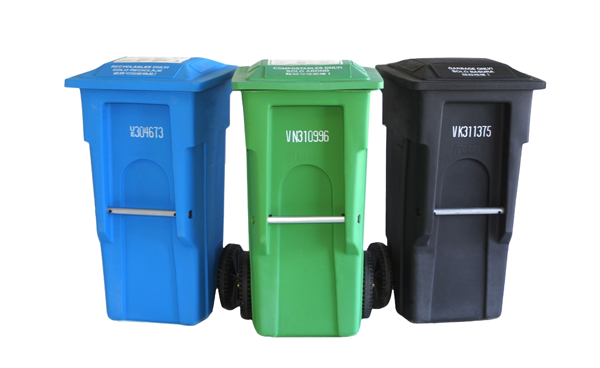Random
Move to Trash

Passing the Ellsworth Kelly section in the recently remodeled SFMOMA, I suddenly worried about whether or not I placed my coffee cup in the right bin, the triptych of civic responsibility causing a Pavlovian response of doubt and shame. One will quickly walk past museum rooms whose contents are prematurely judged as not being interesting enough to hold one’s attention, as I did here, using the section as a shortcut to Agnes Martin, in whose dedicated room a patron’s child had a fit. Minimalism’s problem, I think, is that the conceptual conceit can only be actualized as an executed idea, stamped on an object in space, an aesthetic errand dutifully completed in the supposed name of art. It doesn’t tug at the soul, however antiquated and sentimentally ghoulish such a spirit might seem in an enormous modern and generously lit room, always a bit below room temperature, like a morgue, grand white walls running upward towards the skylights. Guards, whose native islands were unruly colonized, despondently stand in geriatric loafers, their blazers derisively provided by the house, as if they showed up to a fancy restaurant under-dressed.
With such an opening, after our interlude, I wonder if I should just trash this. “Move to Trash” blinks at me to the right of this text box, right next to “Submit for Review,” as if the more modest editorial spirit of the former were calling to me. I worry I’m just recycling ideas. Writer’s block seems bad, that is unless you’re standing on one at the gallows. Then, it’s the one thing that keeps you going.

For those who experience pear pressure, I suggest the compost bin. I stood paralyzed in front of the bins holding a wooden coffee stirrer, which I wouldn’t even have needed had I not used cream—once nursed into vats from lactating i.e. artificially raped cows, their young male calves quickly turned into veal—to continue the passive guilt loop as I defaulted to trash, its very color representing the universal black hole of apathy, and tossed the stirrer in. The colored bins contain the promise that its contents will reincarnate into something else, molded into other objects, or simply be given a new start in the earth. It would be a stretch to say such transference is religious, though the process does contain in it both guilt and its absolution.
Blue, Green, Black, Red (1996) was manipulatively cropped for rhetorical and aesthetic reasons, the missing panel now evident by its title, in case you thought such a triptych existed. It’s part of the celebrated Fisher Collection, whose estate was funded by Gap, Inc., the eponymous couple being co-founders of the global chain. Instead of making accent walls with colorful house paint, the wealthy use million dollar works of art. I stepped back, cropped out the red panel with my hands, fought off the idea to write about it, and thought about something funny.
Let’s call her Kelly moved to Grass Valley, a small hippie town in Northern California. She’d visit me occasionally, driving down in an old van with used vegetable cooking oil for fuel. She built a pond with fish which, if I remember correctly, ate her shit in some ecological parallel universe which made more sense. She raised two goats, named them, included them in holiday cards, then, one day, shot them in the back of the head while they ate wild berries. She turned their skin into leather, which she naturally wore, and ate every part of them. I think she always wanted to disappear, and found a good starting point with her ecological footprint. Maybe the lesser person leaves the bigger mark. She was into women, and so was I, so in my head—in the fuzzy logic of goosebumps and tingly fingers—we were finally made for each other. Throughout college, she dated a singer in a notorious local band; then a silent Japanese exchange student; then a professor, then went crazy one or two times, not bathing for an extended period, using cologne to mask her scent, which confused my olfactory senses, being aroused by the musky smell of douchebags. Later on, she got into martial arts and scared off a suitor after he witnessed her break her opponent’s arm in a Judo competition. Both of them, apparently, would not submit. One day she confessed to me she was a lesbian, which was “no biggie,” a phrase I should have nicknamed my dormant penis curling back into its foreskin. If anything, I was flattered by her confession, for it seemed to justify the friendly pat on the back I received after confessing my love. She went to Prague. I wrote long letters to her, actual letters, pressing my pen so hard into the paper that it could be read like braille, just in case she was blinded by love. Years went by. She got various graduate degrees while my blood pressure and serotonin levels respectively went up and down. I rented a car and drove through the trees at night, past the Zoetrope of redwoods slipping past my periphery, the car headlights incessantly seeking a place it was not at yet. My booty call radar is rusty, so I just drove up because she told me to. After dinner, after dishes, her sole kitchen light buzzing in the awkward silence, my teeth bloodied with I forgot how many glasses of wine, Kelly invited me to bed, from which her cat angrily stared at me. I stood in the doorway, looking so hard into grains of the wooden floorboards that the dark lines seemed like topographical maps of the very rivers my sperm declined to swim upstream that fateless night. Instead of entering her bed, and being the woman she wanted, I got into my rental car and drove home in the middle of the night, my pants dangerously around my ankles, going 80 mph, sarcastically suicidal, jerking myself off, passing truckers who all had a humorous gander at my ‘lil mushroom. I got home and got trashed, which felt recycled.
Museums are like graveyards because they allow you to visit dead feelings. The letters eventually became emails, which eventually became blast emails, one in which she informed a bbc’d list of her new last name. She lives in Vermont now, whose autumn I imagine in red, orange, and yellow. “Color is where our brain and the universe meet,” said Cezanne. In the museum gift shop, another patron’s child equally had a fit about an object destined for the black canvas. “Canvas rots,” said Ellsworth Kelly, in defense of our want of fixity in art. He’s right, but they will do so long after we will, so in the meantime I’d like to hold on to these strange windows into another world. A post whose title betrays what its author fought off, is one—with enough time, and worms, or a sudden flash of either ecclesiastical or nuclear light—which might have never happened.
Tags: Ellsworth Kelly, SFMOMA

Oh hell yes. Welcome back, HTMLGiant!
Oh god, I don’t want to be this person, but Martin didn’t identify with minimalism for exactly the reasons you’re talking about. She actually had these beautiful little poem-like things she would write about her paintings. Her blocks of color were boys and girls and angels and the ocean. Highly recommend exploring more of her work.
Oh god, I hate to be this person, but Agnes Martin didn’t identify with minimalists for exactly the reason you’re talking about. Her paintings weren’t executions of concepts but illustrations of these dreamy stories. Blocks of color represented children and angels and the ocean. I used to have this book that had some of her writings in it. Highly recommend.
I’d assume that Jimmy is here referring to the way SFMOMA is organized, in the sense that the museum’s poor curation (aimed at the late-capitalist impulse that dominates san francisco) lumps Martin in with the masculinist fantasies of male minimalists — at least, this is what I remember in my brief time trawling the sixth floor of the building wishing I were back down at the open bar. Similarly, in the ultimate masculinist impulse of accumulation, the curators have shoved far too many Agnes Martin pieces into a single room, refusing space or silence. It’s a very loud museum in more ways than one.
Hate the sin, not the sinner, as Tammy Faye Bakker’s corpse would undoubtedly mutter if risen from the grave today.
JC!